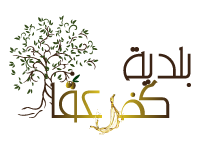Earlier, the Ottoman era was relatively less aggressive than the Mamluks. They kept the tribute system but they suspended the implementation of the law of “ Shourout Al Oumria”.
In 1523, Kafaraka was part of the feudal of prince Mansour al-Assafy. In 1526 it was attacked by the locusts. The prices rose. The olive oil reached two hundred dirhams for 40 litters. In 1550 the Ottoman Sultan issued decrees allowing Christians more freedom in matters of religion and marriage.
In 1579, the Ottoman state turned Tripoli into a ministry and a “Bashawiya” independent from the rule of the Assafis and appointed Yousef Pasha Sifa Kurdi as its first minister. The ministry of Tripoli included the following regions: Jbeil, Batroun, Koura, Zawiya, Beshri, Dnnia, Akkar, Houson and Safita.
From 1521 until 1591, the Lebanese regions, including Koura, were subject to civil wars, assassinations and looting. Although most of the villages, had been affected by these events. We did not find any proof that Kafaraka was affected at that time. In opposite, the number of residents has increased significantly, probably due to the fact that after the Crusader period it became a peaceful village inhabited by peasants.
According to Ottoman statistics published by Dr. Essam Khalifa, the number of Christian adult males in Kafaraka increased from 67 in 1519 and 95 in 1571, while the number of Muslim males declined only from 4 to 3 at that time.
In 1691, Mohamed Pasha Hamada took over the regions of Koura, Bsharri, Batroun and Byblos. He nominated his son Sheikh Ismail responsible over the Koura region.
The sectors occupied by Hamada were continuously agitated. They had repetitive disagreements with Ottoman governors in Tripoli. It is likely that one of the Hamada’s leaders rebuilt partially the Crusader fortress in Kafaraka. It was as his headquarters for collecting taxes and tribute. This place was named “Kabou El Sayed”.
In 1635, due to his dispute with Hamada, Prince Ali Sayfa attacked Amioun and seized its crops and the crops of neighboring villages.
In 1636 the region faced a drought condition and it was invaded by locusts. Many habitants died from hunger.
In 1638 a huge fire broke out in Kafaraka and spread to the lands of Kousba, Bsarma and Amioun. More than 50,000 olive trees were affected by the fire.
In 1661, the habitants suffered from plague. Many people died as a result of the epidenic disease.
In 1673, after a drought condition the locusts returned.
At that time, the governors did not care about the suffering of the people. In contrary, they introduced new type of taxes. The “Qadoumiyyah” tax was imposed on every newborn child. These taxes and disasters forced the people to abandon their villages.
From 1668 to 1750, according to Dr. Farouk Hoblos , the Ayoubis princes, supported by sheikhs of Al-Azar, leased the management of Koura region from the governors of Tripoli. Kafaraka was part of the so-called Emirate of Ayoubis in Koura. Based on the official Ottoman record, each village had its own “Sheikh”. The Ottoman archives did not document any name of “Sheikh” or noble family in Kafaraka. In addition to that the taxes on Kafaraka land were very low compared to other villages. The reason is related to the fact that the society of Kafaraka was a farmer’s entity, where only poor Christian peasants working in a land owned by government or princes.
Conflict occurred between Ayoubis and Al Azar led into division of the Koura region in two parts. Kafaraka was in the part managed by Al Azar .
From 1773 to 1839 Kafaraka became part of the Emirate of Shehabism. Regardless of all these administrative and political changes, the society of Kafaraka stayed almost intact
After the strife of 1841, a new political system to manage the mountain of Lebanon was implemented. It was named “Al Qaemmaqamiatein”. Kafaraka was part of the Upper Koura province, in the Christians “Qaemmaqamiyyat”.
In this period, the political, social and economic conditions slightly improved. The rich families owned lands in the Kafaraka. An Ottoman document showed that in 1849, Elias Ghosn, in partnership with Tobia, bought a plot in Kafarka. The same document proved the presence of property owned by the Prince Melhem Chehabi.
In 1856, Sultan Abdulhamid issued a decree, announcing the equality between all citizens regardless of their religions. This decree had a positive impact on citizen’s behavior. The farmers in Kafaraka started owning the lands which they cultivated for long generations.
In 1860 a new heavy strife took place. The impact was catastrophic on many villages. However, Kafaraka was not affected by this crisis. Many new families moved from the affected villages to Kafaraka.
